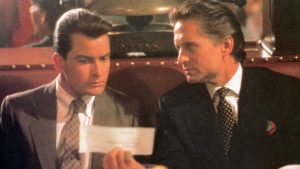I recently read a good book called Quality First Investing: A checklist approach to finding and sitting tight in multibaggers (2021) that was published on the last day of the year. Even though I didn’t agree with the author’s checklist-based framework for picking quality stocks (we use a more holistic approach), the book had enough quality insights that I would recommend it to anyone looking to build knowledge on investing generally. The most precious one-liner from the book was his claim that you can borrow ideas, but you can’t borrow conviction. This rings so true that I have repeated it dozens of times in January alone.
How does one build conviction in stocks? You do it one outstanding company at a time. It’s not about “stocks vs bonds,” “growth vs value,” “expensive vs cheap,” or “tech vs financials”. Its more about what a specific company can or cannot do over time to become much bigger and more valuable than it is today. While not completely detached, answering such a question has little to do with today’s macro backdrop, or with what the stock market will do this month or even next year. It’s about the overall quality of the business, the culture, the product offering, and the secular growth opportunity. I know of no other way to determine this with conviction but to do the deep work – and so that is what we do at Victori. It is in fact our purpose to give people an opportunity to participate in the enormous wealth creation that comes from investing with conviction in the right things.
“Of all kinds of capital,” wrote the Greek philosopher Demosthenes circa 300 BC, “the most productive in business is confidence.” I have confidence that the market will recognize the value that our companies create every day, and which compounds over time. People often ask me – but what if they are overpriced? To me that’s the wrong question, because the answer is unknowable. The market decides today’s price and it does not explain why or when it will change its mind. But the trajectory is only a challenge if your objective is to get rich fast, or if you don’t have the staying power to withstand the market’s short term mood swings. To quote Marcel Duchamp, “there is no solution because there is no problem.”
With my life’s mission of making our customer’s dreams come true, if there is one thing I make sure of is that not only I do the deep, necessary research, but that my team does it as well – so we can help each other build conviction and confidence that our companies are not only truly outstanding, but that they remain so for as long as we own them. We try our best to make sure we read everything, question everything, ponder anything, and understand where all the lines are that when crossed, would cause us to conclude that we were wrong. But this doesn’t apply only to the stocks we buy and hold. It also applies to knowing enough about how markets and humans work, and the implications to the end game from the obstacles and detours that tend to come up along the way. One thing I have known for decades, is that market and humans can, and will, surprise. Basically, anything can happen in the short term. There is that famous 6-minute video of an interview with Charlie Munger when he gets asked in 2008 how worried he was about the market’s decline (link to video). His answer: Zero!
Anyone who has managed money for more than a couple of decades can relate to Charlie’s response. When you go through the Russian default crash, the dot-com crash, the Tequila crash, the housing crash, the Covid crash, the energy crash, and other violent market selloffs and rotations from the front seat, after a while it becomes not just easier to cope, but more profitable to participate. I for one dislike it as much as anyone else to have my net worth marked down, but instead of hurting my confidence, it boosts it. Big selloffs invigorate me because I know it is a marathon, and that over time, only those with the confidence to stay put will compound. Larry Livingston concludes in Reminiscences of a Stock Operator (1923) that it was his sitting that made him all the money, not his trading. Hedge fund manager Larry Hite reaches the same conclusion in his book, The Rule (2019). Likewise, Robert Ringer observes in his book, Looking Out for #1 (1977) that “money tends to grow exponentially in smart hands.”
It is common for the bears to come out when there’s a shakeout to pronounce that the bull market is over. Wall Street has no lack of talking heads with opinions, and the media seeks them out when there’s fear in the air. The most read articles on the Bloomberg are the most negative ones. I can probably write about this topic for longer, but that would not be productive.
The impetus of this post was not to rant nor preach. I did want to share a handful of books that helped me think straight during times of extreme volatility. Thinking straight means keeping what matters in mind – which is the endgame instead of what happens this week or next month, or while the Fed raises rates or doesn’t. I already mentioned a few books above and highly recommend the 6-minute video with Munger. The following five books are listed in no particular order:
- A History of Interest Rates (2005): If you are an enthusiast on interest rates, this is a really good book to read. It starts way back in the ancient times and goes all the way through 2005 and covers the whole world. This is basically a book on world history told through the lens of interest rates. There is a lot of data and more than enough evidence given that interest rates fluctuate, sometimes dramatically, but that invariably, life goes on. History does not stop. The most striking takeaway is that in times of peace and when a good thing gets going, interest rates can fall for decades. There have been many of these periods in the last thousands of years, including after the Napoleonic Wars, which ended in the early 1800s. Historians put the pin on Napoleon’s defeat at Waterloo in 1815, but the end of the period was a process, as it often is. The first half of the 1800s was not a gentle period in US markets (at least not as it pertains to interest rates) because America lost the War of 1812 to the Brits, which fragmented the nation and drained its resources, and then came the Texas Revolution, where the state declared independence from Mexico before it was annexed in 1845, and then came the Civil War in the 1860s. There was also a lack of money generally as the nation backtracked on many of the advances in banking that Alexander Hamilton had put in motion. These were the times when General Andrew Jackson ascended to power and polarized the nation into right and left out of fear mongering that the Brits were going to take the country back. Despite these challenges, the US economy boomed in the 1800s and especially in the second half as the gold rush went into full swing and the money supply accelerated. But this is the story in the US, which was only then becoming a world power, but was still second to England in terms of financial might. From a high of over 10% at the turn of the century, interest rates in England and most of Europe went steadily and consistently down during most of the 1800s, such that by the 1890s, one was able to borrow at 2-3% – and borrow they did. Rates in the US also declined, but they were still above those in Europe given the higher perceived risk. I am sure it was not as obvious at the time as it is today, but the US entered the 1900s as the undisputed center of the financial world, where they remain today. The bottom line is that after reading this book, you will be less impressed by today’s rate fears. Time after time, without fail, crisis turns to opportunity and high rates revert to low rates. Over the centuries, these fluctuations have happened closer and closer to zero. So anyway – this is one of the books to read if the backdrop is making you anxious.
- The Richest Woman in America: Hetty Green in the Gilded Age (2012): This is a simple book and a quick read. Hetty Green had nerves of steel. She came from a puritan family and represented what Max Weber has famously coined the magical Protestant ethic that makes America so special. She was the Warren Buffett of her day. Her ability to stay the course when others folded, and to not overextend herself during good times, made her the richest woman of her time. She lived during the 1800s and many of the stories in the book become more colorful if one has already read Sidney Homer’s A History of interest rates.
- The Davis Dynasty: 50 Years of Successful Investing on Wall Street (2001): This book tells the story of Shelby Davis who inherited a modest amount of money and made dreams come true by doing his homework and sticking to his conviction when most others couldn’t. What’s remarkable about the story is that Shelby was an insurance guy, and most of what he invested in throughout his life were insurance stocks. The book tells the stories of the troughs he went through and the social and psychological challenges he had to overcome on his way to the endgame. The story is enlightening and encouraging, but it’s not exactly happy because Shelby fights with his son, who worked with him as an analyst, and they become estranged. The son went on to start Davis Funds, which is a powerhouse to this day, with over $30 billion under management.
- The Great Wave: Price Revolutions and the Rhythm of History (1996): I have written about this book before. It is about the great price cycles in history. While the topic is similar to Sidney Homer’s book, it is more thematic and more ambitious. Homer’s book was originally written in the 1960s, but the 4th edition, which is the one I read, was published in 2005 – which was over a decade after the The Great Wave was written, and notably, before the arrival of the internet was obvious. The big takeaway from this book is that even though all signs were pointing to a start of an inflation wave in 1996, what we got was the opposite. Despite ending on a bad note, the book has precious insights on how and why prices swing over time. It makes predictions of the start and end of price waves seem like folly because of how easy it is to miss it by a decade or two. It also highlights how history happens in spurts and shakeouts instead of through measurable causes and effects.
- The Rise of Carry: The Dangerous Consequences of Volatility Suppression and the New Financial Order of Decaying Growth and Recurring Crisis (2019): I reviewed this book last year and my review, which is still posted on our website, was perhaps more critical than it should have been. There are many books that provide precious insights, only to make a bad turn or draw a wrong conclusion, and The Rise of Carry was one of these. I tend to agree with Max Weber (1864-1920), who probably read more books in his life than anybody alive today, that it doesn’t matter if a book is bad as long as you can get something good from it. This book has a passage where it explains why carry trades have staying power and who wins from them. I don’t think this was the intended message, but it explains why in financial markets, the rich keep getting richer. The big winners in the market are those who can stay put while others get wiped out. They clean up in crashes. This is nothing new. Buffett has obviously been one of these people. Howard Marks too. But the message runs deeper. The owners of the capital keep accumulating more and more, and by doing so, they gain more and more staying power. Doesn’t mean they can keep it forever, of course, but let’s just say it’s not smart to bet against them. So next time you feel sorry or schadenfreude about a smart billionaire on his knees, just make sure to check in on him after the fall. What you will often see is that they came out even stronger and richer. Think Masayoshi Son of Softbank. Again, history is full of tales of riches to rags due to malinvestment or excessive leverage. Afterall, the housing crash did take down Lehman and Spain did eventually wipe out some Fuggers. So obviously it is not something that’s written in stone, but it does say in the New Testament(Mathew 25:29) that “for unto every one that hath shall be given, and he shall have abundance.” In other words – buy the winners.










